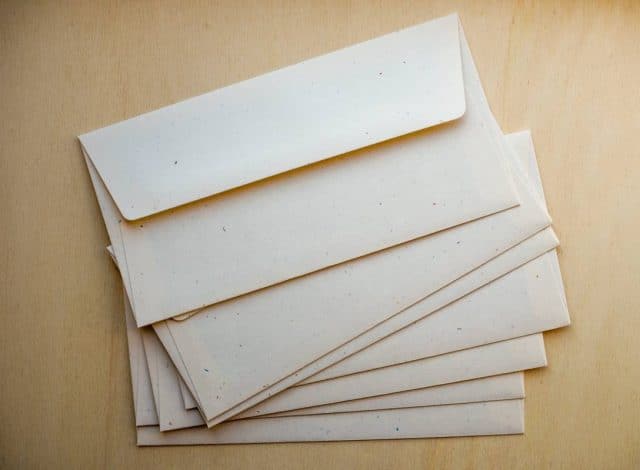Envelopes have played a key role in communication and document delivery for centuries. They serve as a fundamental element in the preservation of privacy for personal correspondence, sensitive legal documents, and confidential business communication. Despite the rise of digital communication, the need for physical document transfer persists, and with it, the importance of envelope security cannot be overstated. As society continues to grapple with privacy concerns and data breaches, the envelope industry has been challenged to innovate, ensuring that what is sealed within remains secure until it reaches its intended recipient. This industry’s commitment to privacy has made advancements in security features a topic of serious interest for businesses and individuals alike.
However, theft and tampering are increasingly sophisticated and traditional security measures often fall short. This has sparked a revolution in the envelope manufacturer sector, focusing on developing advanced security features designed to outdo the ingenuity of unauthorized interceptors. The introduction of innovative solutions like tamper-evident seals, watermarking, RFID blocking technology, dual authentication, and even self-destructing envelopes has transformed the field of document privacy. These breakthroughs not only enhance the security of the contents but also instill a greater sense of trust between senders and recipients. This article reviews the latest envelope security features, highlighting their importance and examining how they contribute to safeguarding privacy in our day-to-day transactions.
RFID Blocking Technology
To combat the vulnerabilities associated with Radio-Frequency Identification (RFID) technology, which has become increasingly prevalent for data storage and transmission, envelope manufacturers have introduced RFID blocking technology. This innovative feature consists of materials that interfere with radio waves, rendering any RFID tags within the envelope undetectable by scanners, and protecting the enclosed data from unauthorized digital eavesdropping.
The effectiveness of this security measure has major implications, particularly for documents that incorporate RFID chips, such as passports and credit cards, safeguarding the personal and financial information of individuals during mail transit. The inclusion of RFID blocking technology into envelope design is a proactive measure toward reducing risks associated with technological progress, assuring both senders and recipients that sensitive information remains confidential until it is safely delivered.
Tamper-Evident Seals
Incorporating tamper-evident seals in envelopes marks a significant progress in document security. These seals are carefully designed mechanisms intended to visibly indicate any unauthorized attempts to access a sealed envelope. For instance, the seal might display a void pattern, alter its color, or reveal a message once the envelope is tampered with, effectively alerting recipients to potential breaches of confidentiality.
The application of such seals is particularly important for legal, financial, and personal documents that bear a high degree of sensitivity. Their presence deters would-be interceptors and provides a traceable line of evidence that support claims of tampering. This straightforward yet effective security feature is a testament to the envelope industry’s adaptability and commitment to safeguard sensitive information during postal handling and delivery.
Watermark Paper
Watermark paper infuses an additional security layer into envelopes by incorporating subtle yet distinctive marks that are an integral part of the paper itself, typically manifesting as logos, patterns, or text. These watermarks are introduced during the paper manufacturing process, making them intrinsic to the paper fibers, which ensures they cannot be removed or altered without damaging the paper.
The unique characteristic of watermarking is that the designs are visible when the paper is held up to light, yet are not disruptive to the content printed on the paper. For forgers and counterfeiters, replicating these watermarks is challenging without access to the original manufacturing process, greatly enhancing the security of confidential documents enclosed within. Employed extensively in important documents such as banknotes, passports, and certificates, watermark technology is equally invaluable for envelope security, where maintaining the integrity of private communications is key.
Dual Authentication Systems
Enhanced security in envelope design is evident with the integration of dual authentication systems, which require an extra step for access: the scanning of distinct QR codes or barcodes. The design of this system is such that the physical barrier of the envelope remains closed until the correct code is identified and verified via a scanning device. By implementing this measure, envelopes become much more secure, effectively minimizing the chances of unauthorized access and greatly decreasing the potential for information breaches.
This level of security is particularly beneficial with sensitive documents, requiring the assurance that they can only be viewed by those who possess the necessary authentication credentials. It’s an intelligent approach that aligns with digital security protocols, integrating them into the physical space to provide a formidable defense against the interception of confidential communications.
Self-Destructing Envelopes
The field of document security is constantly changing, and the latest advancement is the invention of self-destructing envelopes. They are designed with unique materials and mechanisms that trigger an irreversible destruction process when the envelope is opened. This safeguards the privacy and confidentiality of the document within by rendering the envelope’s contents unreachable post-exposure.
The technology resonates with the concept of a one-time pad in cryptography, where the information, once viewed, cannot be reconstructed or retrieved, effectively neutralizing the risk of unauthorized disclosure. This breakthrough in envelope design is ideal for transporting highly sensitive or classified materials, ensuring that any attempt at unauthorized access results in the immediate and complete destruction of the document, thus upholding the highest standards of security and privacy.
As we’ve explored, the path of a confidential document is filled with the potential for unauthorized access, but thanks to modern innovations in envelope security features, this risk is greatly minimized. From tamper-evident seals that act as a frontline deterrent to watermark paper preventing forgeries, the envelope industry has risen to the challenge. Innovations such as RFID blocking and dual authentication systems fortify envelopes against high-tech threats, while the advent of self-destructing envelopes provides an unprecedented level of protection. As senders and recipients address the challenges of protecting sensitive information, these advancements offer a robust shield during transit. To stay informed on the latest security developments and deepen understanding, readers are encouraged to research current trends in information security and how they intersect with these envelope security technologies.

Speaks from heart, always too passionate and driven by emotions. Spins the words with kindness & sharpness, intriguing your ever-inscrutable minds.




